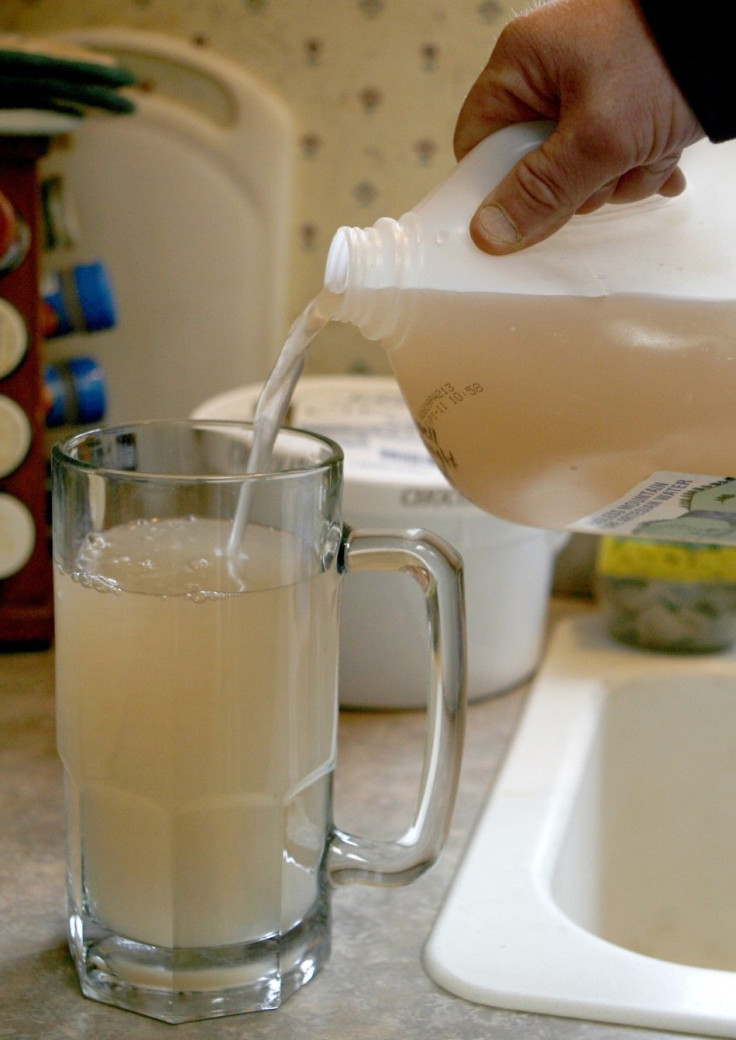Chemistry Prof Questions Safety Of Dimock, Pa. Water, Challenges EPA

Although the U.S. Environmental Protection Agency determined hydraulic fracturing didn't contaminate private water wells in Dimock, Pa., the water there is probably not safe to drink, said Ron Bishop, a professor of chemistry at State University of N.Y. at Oneonta.
In fact, Bishop said he isn't sure the EPA is doing a good job educating the area's residents about the potential hazards present in their water.
Dimock, Pa., has been at the front line in the national debate on natural gas drilling through hydraulic fracturing, or fracking. The drilling technique calls for thousands, possibly millions of gallons of water to be pumped underground with toxic drilling chemicals and sand to fracture natural gas bearing rocks. The water that remains is a toxic sludge -- and a dozen households accuse local drillers of failing to properly clean their private wells after previously contaminating them.
Some area residents say their water looks like chocolate milk. Others have described the water as the color of milk and coffee.
The accusation has been the subject of several investigations by Cabot Oil & Gas Corp. (NYSE: COG), the Pennsylvania Department of Environmental Protection, and most recently the EPA. So far, all findings suggest the water is potable.
Federal regulators in March found traces of arsenic, sodium, methane, chromium and bacteria in the water but those levels were within safe ranges, the EPA reported.
But Bishop said the levels of heavy metals and salts may not be what is most threatening to human health. He said he is wary of the EPA's declarative conclusions when federal regulators have yet to release their entire data.
Bishop Concerned About Methane
What we have so far is still preliminary, Bishop said, who added he is convinced the methane present in some of the town's wells came from deep underground -- the natural gas that Cabot Oil is trying to harvest. Out all the things that give me the most concern, it's the methane.
Methane's solubility with water changes as water gets heated. When water is cold, methane is more soluble and often times fully dissolved, but as water is heated, methane starts breaking off from the water molecules it was attached to, Bishop said. The change in water temperature does not have to be great for methane gas to start leeching from running hot water in either sinks and showers.
What happens then, Bishop said, is that methane starts displacing oxygen. Slowly and over time, the leeching methane will start depriving area residents of air. When dissolved in water and drunk, methane is harmless, Bishop said.
The effects are not immediate and will unlikely cause asphyxia, but oxygen deprivation causes nausea, headaches and over time will lead to health declines. What's worse, some homes in the town have methane levels that are nearly twice the saturation point in cold water, Bishop said.
Bishop said he has reasons to believe the methane found in the water is evidence that hydraulic fracturing has affected the town's water, because it 's from deep underground.
Methane found in deep sources usually has a corresponding ratio to another hydrocarbon gas, ethane, that erodes over time and especially as the gas migrates toward the surface. Underground methane is roughly 3 percent ethane, a level that is unattainable from surface bacteria and landfills, Bishop said.
With this in mind, Bishop said he is wary of the EPA declaring Dimock's water free from harm.
That is why I am not so confident that all that water is so safe to drink, he said.
The EPA will release a third round of tests soon. The federal agency previously declared twice this year the town's water was safe.
© Copyright IBTimes 2024. All rights reserved.





















